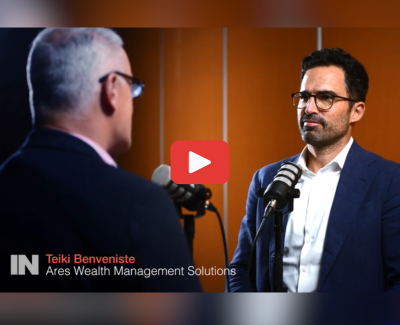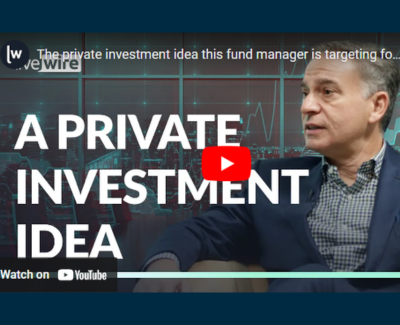The investment approach that works in every market cycle
The following was produced and published by Livewire on 14 December 2022.
Market indicators point to a recession, but private credit investors don’t need to adjust for cycles if they stick to the basics of portfolio construction.
If I told you that there is one approach to investing in private credit that always works regardless of market cycle, would you believe me? I suspect most of you would be sceptical with good reason. It sounds like an investment fairy tale. Not too hot, not too cold, just right.
It’s not a pipe dream though, nor is it the type of multi-tiered approach that would require a PhD to interpret.
According to Greg Margolies, Partner at Ares Management, it comes back to the basics of building a portfolio.
“The way you have to invest and build a portfolio is always the same, whether a decreasing rate environment or increasing rate environment. The takeaways are to remain very diligent on credit selection, focus on senior secured investments in defensive industries, high quality management teams and companies that have a moat around their cashflow,” he says.
It’s a timely reminder at a point where all market indicators point to a recession. And private credit is having its moment in the sun.
The growing appeal of private credit
For a market that often falls off the radar for investors, it’s an enormous space. And still growing. A recent report from Preqin placed assets under management at $US1.2 trillion at the end of 2021.
Ares predominantly invest in senior secured loans which are typically floating rate loans to high quality companies and secured against the company’s assets. These are typically viewed as more stable and lower risk compared to other types of private credit loans like distressed situations or junior unsecured credit.
Margolies believes there are a few reasons for the growing interest in private credit from the issuer side:
- Increased banking regulation and consolidation meaning institutional private credit providers are filling the gap for the middle market space.
- Increasing deal sizes to incorporate liquidity demands.
- The definition of a liquid bond or loan has grown larger.
From an investor side, he believes the institutionalism of private credit has allowed for more diversified high-quality portfolios which have operated across cycles and investors are increasingly attracted to healthy floating rate returns compared to traditional fixed interest investments. Particularly at a point where interest rates are rising.
Clouds on the horizon… except for credit
It’s no secret that now is a great time for credit markets. In fact, we’re arguably seeing some of the best risk-adjusted returns investors have seen in a while. It’s the silver lining at a time where the rest of the news is gloom and doom.
Despite this, alternative credit is typically under-represented in investment portfolios.
You could call it the opportunity investors are missing – and perhaps now is the time investors should be taking a closer look. If nothing else, the fact that investors can find 10-12% risk-adjusted returns in senior secured investments should merit consideration. Particularly when you compare it to the listed equities market.
Margolies is buoyant about the prospects of private credit, even heading into a recession.
“We’re seeing increasing base rates, increasing spreads, more and higher upfront fees. There’s lower total leverage levels, good covenants, and credit protection in the documents. If you put that together, it tells you for a unit of risk, you’re getting compensated very well,” he says.
Further to this, he points out that both consumers and businesses alike are better positioned heading into a recession compared to any time in the past.
A massive amount of pandemic stimulus along with high liquidity was supportive of business investment and also saw consumer saving rates up and confidence at highs. This has continued to act as a buffer as liquidity leaves the market – though Margolies notes that there are signs consumers are finally starting to feel the hit.
“The companies we invest in have been able to clean up their balance sheets. They have no looming walls of maturity; debt-to-EBITDA ratios have decreased, and the interest coverage ratios are better than they’ve been historically,” Margolies says.
While this is good news from a credit investment perspective, Margolies also points to these as potential factors for a milder recession than past ones. He also views the active intervention of the US Federal Reserve as supportive of this.
How to invest in private credit in the current environment
In good times or in bad, Margolies points to the basics mentioned earlier – robust due diligence, defensive industries, stable high quality management teams, and companies with a moat around their cashflow.
It comes back to the core focus of being a credit investor.
“Your focus as a credit investor should always be in preserving the principle and protecting the downside. Those characteristics mentioned before fit companies that will allow you to make sure you’re getting your principal back and getting your coupon along the way,” he says.
But one concession Margolies makes to adjusting in cycles is that environment can change the nature of the deals in private credit. For example, in the current environment, Ares may be able to negotiate extra credit margins such as higher origination fees than loans they’ve previously issued. It’s a loan adjustment, rather than a change to the investment strategy process.
Ares Management’s emphasis on careful selection and due diligence has meant that it has historically turned down more than 95% of the deals it has seen. To put it simply, being choosy pays off.
So where should a discerning investor start their search?
“We’ve seen some shifting in the valuations and returns on US direct lending over time. We’re seeing all-in returns in senior secured loans of 10-12% the floating rate, with limited mark-to-market volatility. We think it has some of the best risk-adjusted returns across the asset classes we see across the board,” Margolies says.
It’s a view backed up in the asset allocation of the Ares Diversified Income Fund where more than half of the fund is invested in US direct lending.
Margolies is also seeing a trend towards larger companies in Europe and the US who traditionally wouldn’t have used direct lending entering the market as a result of increasingly larger average deal sizes. He notes these larger companies typically are more defensive in nature, due to having greater geographic breadth, broader business lines, significantly greater EBITDA and cashflow and competitive advantages. It’s a positive for investors as these businesses enter the fray and offer far more diverse and stable market exposures.
A more specific trend to the current environment of volatility has meant Ares is seeing an increase in opportunistic investing, such as distressed selling of high performing assets. For example, banks running into regulatory capital restrictions or hedge funds needing to raise capital and therefore needing to sell high quality assets at a discount. It’s offering an excellent opportunity for investors like Ares.
Innovating the investment space
Investors might also be surprised to learn how private credit investors like Ares are changing the game on the ESG front. After all, it’s often something people think more consciously about in their listed equity investments, but this is proof it can be portfolio-wide.
“We’ve structured some loans whereby if the company hits certain pre-selected criteria, for example around emissions or governance, there could be a savings in the coupon they pay. If they don’t hit the criteria, the coupon goes up. There is an incentive to perform from an ESG perspective. Companies are thrilled to sign a document where they feel the pressure because they are believers in achieving a lot of the same metrics that we are,” Margolies says.
It’s an emerging trend in the industry and one he is excited about.
He’s equally enthusiastic about pricing transparency in private credit portfolios so that investors know and understand what is actually happening. By this, he means pricing the portfolio book on a monthly basis for investors and using third-party evaluation providers to validate figures. It’s not a common practice in an industry that is notorious for being “private” about its unlisted investments, but certainly a welcome and valuable one for investors. After all, it makes it much easier for investors to accurately value their private asset allocations in a broader portfolio.
Cross-cycle investing
Though we talk about the time being “right” for credit markets, as Margolies points out, being selective and using the right criteria can make private credit a strong portfolio addition across any part of a market cycle. As an under-represented allocation in many investors’ portfolios, now could be the time to take a closer look at alternative forms of credit. Either way, applying rigorous due diligence with an eye to defensive industries, high quality management and moats around cashflow is an approach worth holding onto for your investments on the whole.
The Ares Diversified Credit Fund primarily invests in a diversified portfolio of global liquid and illiquid asset classes via its investment in the CION Ares Diversified Credit Fund (Underlying Fund). The Fund also invests in cash and foreign exchange hedging instruments. In this interview, where we refer to the Fund’s investments we generally do so on a ‘look-through’ basis; that is, we are referring to the underlying assets that the Fund is exposed to through its investment in the Underlying Fund.


